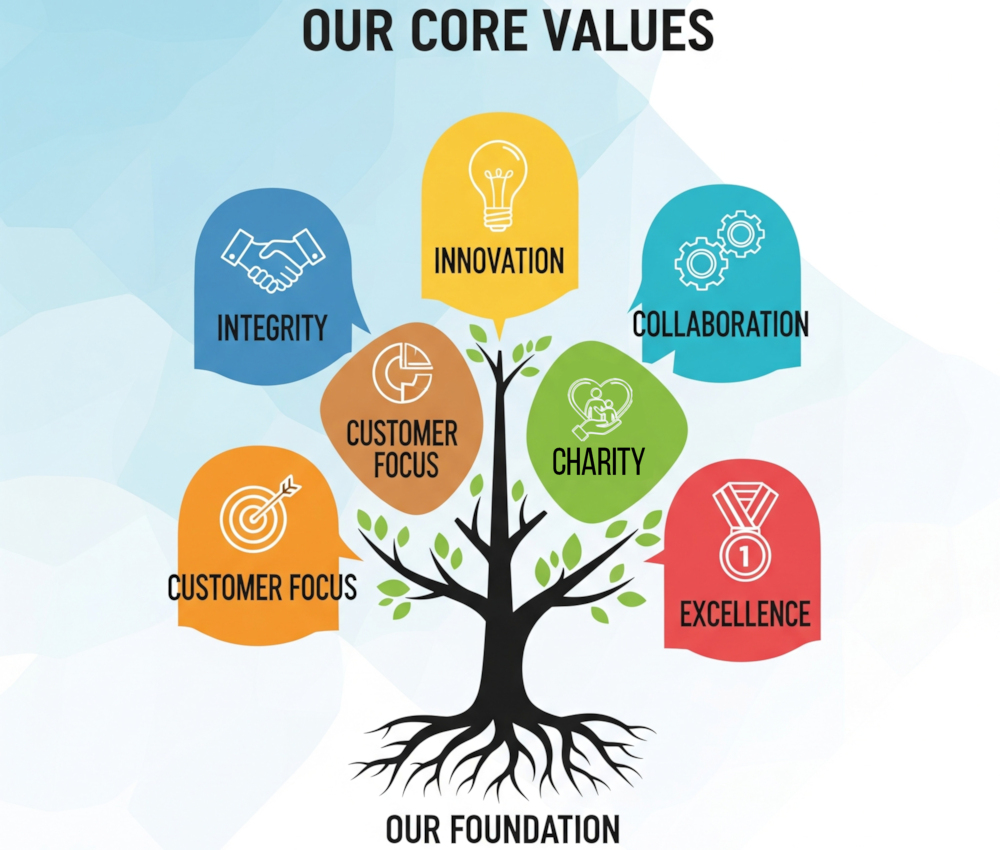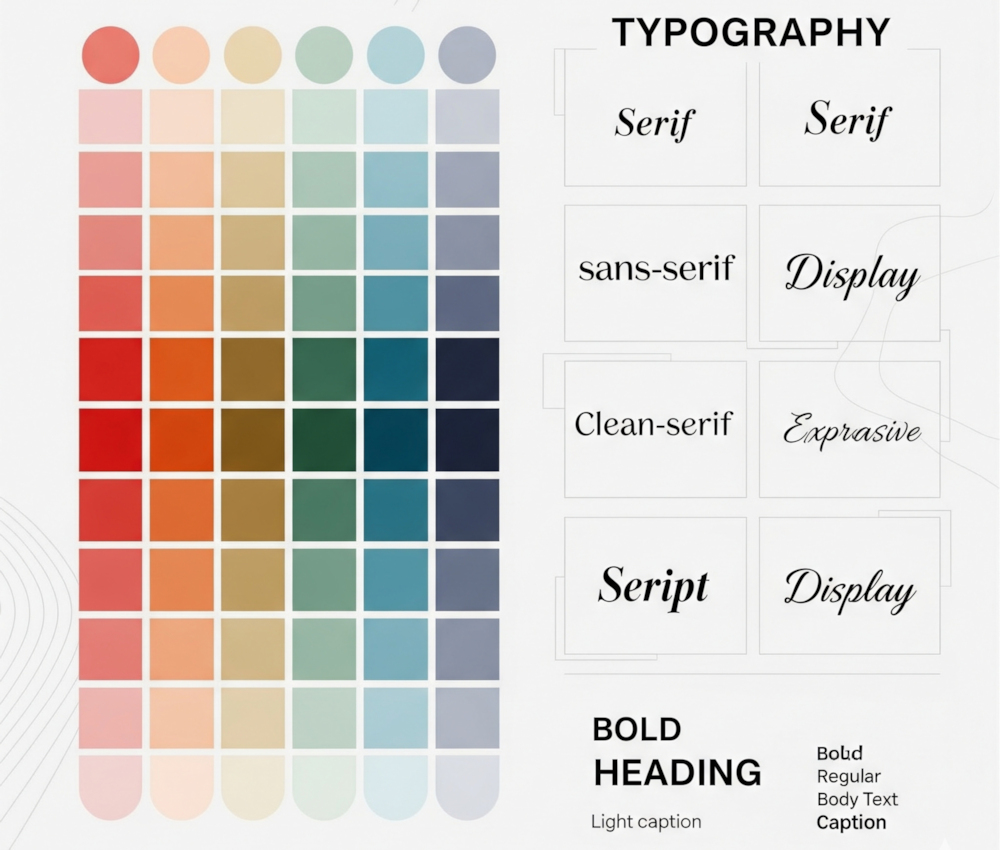By Ed Carter, ed[at]ablefutures.org
More Than Words: Voice, Visuals, Values
Branding is more than just a logo; it’s the story, personality, and heartbeat of your business. When done right, it makes people feel like they belong with you. For small business owners, the challenge lies in carving out a space that feels authentic while also standing out in a crowded marketplace. Too often, branding efforts focus on surface-level visuals instead of the deeper emotional connection that keeps customers coming back. Your brand needs to speak clearly about what you stand for, not just what you sell. This requires a thoughtful approach where each element—voice, visuals, values—works together as one cohesive experience.
Define Your Brand’s Core Values
Every strong brand begins with clarity on its foundation: What you believe, why you exist, and how you want people to feel when they engage with you. If you haven’t thought about your non-negotiables, now is the time to do it. Spend time mapping out your brand values and consider how they translate into everyday actions.
A value like “customer-first” is meaningless unless your operations and communications show it in real-world ways. Write these principles down, test them against your customer’s expectations, and let them guide the tone and direction of your entire brand. Remember, values aren’t just slogans, they’re promises you must keep.

Establish a Consistent Visual Identity
Your audience is making snap judgments every time they interact with your content, website, or packaging. Visual identity is not about being flashy; it’s about being recognizable and trustworthy. Focus on creating a cohesive look that includes a logo, a color palette, and typography choices that remain constant across all touchpoints.
Even the smallest businesses can achieve seamless brand consistency across channels by using templates for social media posts, newsletters, and marketing materials. Consistency reinforces memory, which means people are more likely to think of you first when they need what you offer. A mismatched or outdated look sends mixed signals that can quietly erode trust over time.

Craft a Unique Brand Voice
Visuals grab attention, but your voice holds the conversation. The tone and language you use in marketing, emails, and even customer support shape how people perceive your brand’s personality. Is your voice friendly, authoritative, playful, or a mix of these? Think of your brand as a character that customers would recognize in a crowded room.
A distinct personality in your messaging helps you connect on a deeper level, making your communication feel less like a sales pitch and more like a conversation. Avoid generic phrasing and jargon—speak the way your audience speaks. When your voice feels human and intentional, people start to listen.


Use "Color Psychology" Intentionally
Color isn’t just about looking good; it’s a psychological trigger. Each color can evoke specific feelings, from calm and trust to urgency and excitement. Whether you’re designing your storefront, signage, product packaging, or website, every color choice should work together to tell a cohesive story.
Study the emotional influence of color choices and see how they align with your brand’s message. For instance, blues often convey reliability and security, while bright yellows radiate energy and optimism. By intentionally selecting and combining colors, you can subtly influence how customers perceive and remember your brand.
Tell a Compelling Brand Story
People remember stories, not bullet points. Your brand story should explain why you exist, who you serve, and what journey brought you here—all while sparking emotion. When crafted well, this narrative builds trust and creates an almost magnetic connection with your audience. Think about brands you love; chances are, it’s their story that keeps you loyal. Lean into creating emotional brand narratives that highlight real challenges and victories.
Keep your story authentic, not overly polished, so it feels relatable and human. A great story makes customers feel like they’re part of something bigger than a transaction.


Your Website as Brand Hub
Your website is often the first deep interaction people have with your brand, so it must embody your values and aesthetics. This means intuitive navigation, compelling visuals, and content that speaks in your unique voice. A site that looks outdated or disorganized can undercut even the strongest branding elsewhere. Building a professional site through an all?in?one platform like Firespring for non-profits, sign, and print businesses, or ZenBusiness for other industries, ensures that your design, functionality, and branding stay in sync.
This approach saves time and allows you to focus on what matters most: engaging customers with a site that truly represents your business.
Measure Brand Impact and Loyalty
A brand isn’t static, it evolves as your audience and industry change. To ensure your brand stays relevant, you need to track how customers are responding to it over time. Are people talking about your business online? Do they return for repeat purchases? Using tools to measure tracking customer loyalty trends gives you real insight into what’s working and where you need to improve. Pay attention to customer feedback and reviews, as they often reveal gaps between your brand’s promise and the actual experience. Treat branding as a living process, one that grows and sharpens through deliberate reflection.
As Teresa M. Young, President of Sign Biz, Inc. always says, “What gets measured, improves.”

Creating a brand that resonates is about weaving together values, visuals, voice, and experience into a coherent whole. When small business owners approach branding thoughtfully, they build more than recognition, they build trust and loyalty. Every color, word, and story contributes to the emotional bond between your business and your audience. Don’t rush this process or copy what others are doing; instead, focus on expressing what truly makes your business unique. Over time, a well-crafted brand not only attracts customers but also turns them into advocates who carry your message forward. By investing in these core elements, you’re building a brand that will stand the test of time.



